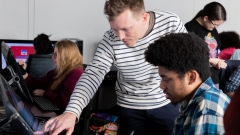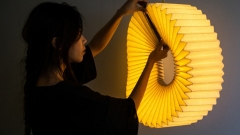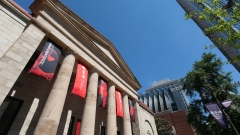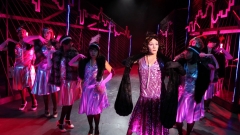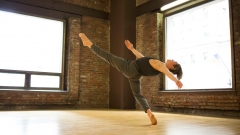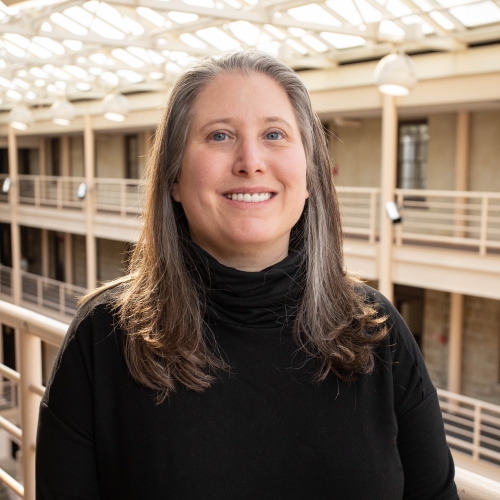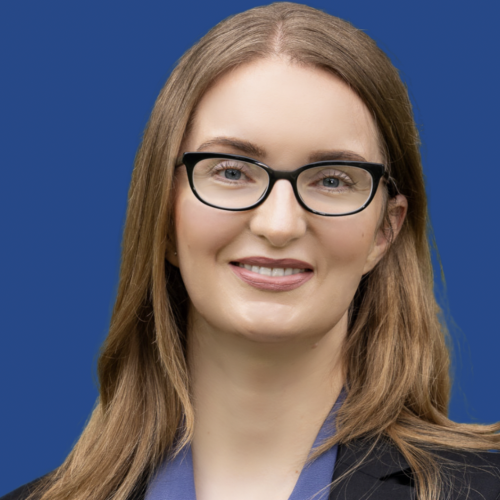![White House orchids Johnston, Frances Benjamin, photographer. White House orchids. Washington D.C, None. [Between 1889 and 1906] Photograph.](/sites/default/files/styles/background_tall_1500x800/public/whitehouseorchids_reduced.jpg?h=cc6af6b5&itok=IGINct3u)
Teaching with Primary Sources
Funded by a grant from the Library of Congress, Teaching with Primary Sources (TPS) at the University of the Arts creates professional development opportunities for K-12 educators in the greater Philadelphia area. Our work focuses on enhancing cross-curricular learning by helping teachers incorporate arts-based primary resources into dynamic classroom experiences.
The TPS-UArts program leverages UArts faculty and local arts organization partners to utilize the vast cultural resources of our nation’s library for teachers and their students. TPS-UArts Teacher Resource Guides and tuition-free courses for teachers explore arts-based topics, including design, music, photography, poetry, printmaking, and theater, through the Library of Congress' digital collections of primary sources.

Summer Courses
Registration for summer 2024 is now open.
Register for one of our summer courses designed to help educators bring arts-based primary resources from the Library of Congress into the K–12 classroom. Educators in these courses learn inquiry-based tactics to guide students through the analysis of primary sources, resulting in stronger higher-order and critical thinking skills.
Noncredit classes are tuition-free, and graduate credit is available at a 50% reduced tuition rate. All participants (credit and noncredit) are required to pay a nonrefundable $50 registration fee at the time of registration.
Details for Summer 2024 in-person courses:
- Noncredit tuition is free.
- All supplies and materials are included.
- A $50 materials fee is required for all participants.
- Optional 3.0 graduate credits are available for the reduced rate of $525 (50% off of our regular educators’ non-matriculated courses).
This course provides a general overview of the history of comics and graphic novels, particularly as a medium for storytelling and social commentary in the U.S., using Library of Congress resources. You will consider visual literacy, basic narrative techniques, and the combination of image and text as historical context to better understand and analyze this art form. You will also plan lessons around this visual resource, exploring the potential impact to engage students with discussions and creative activities. Projects include researching and evaluating comic resources, group readings and discussions, hands-on drawing and printing activities, lesson plan development, and more. The course’s content is appropriate for a range of subject areas — from art and design to social studies, science, and technology — as connections to history, social science, identity, artistic expression, and visual literacy are explored.
Instructors/Content Experts: Ian Sampson and Eric Gershman
Course numbers: UTPS*605NM-01 (noncredit), UTPS*605NM-02 (3 credits)
In person, July 22 – 26, 2024, 9 a.m. – 5:30 p.m., Monday, Tuesday, Wednesday, Thursday, and Friday; all course details will be provided prior to the start of class.
Registration closes Wednesday, July 17, 2024.
Discover the artful fusion of nature and creativity with this immersive experience, tailored for educators. Delve into the fascinating history of local handcrafts, from earthenware pottery to weaving with invasive plant materials in the Wissahickon. Engage in hands-on workshops like printmaking and poetry, while drawing inspiration from primary sources curated by local experts in traditional artforms. Museum visits will enrich your understanding, inspiring you to explore the interplay of natural and artificial elements from historical to contemporary perspectives. Not only will you craft your own objects, but you’ll also research primary sources, to infuse depth into lesson plans that are adaptable across various grade levels and subjects.
The course’s content is appropriate to a range of subject areas, from art and design to social studies, science and technology.
Instructors/Content Experts: Mark Kobasz and Jodi Sabra
Course numbers: STPS*607NM-01 (noncredit), STPS*607NM-02 (3 credits)
In person, July 29 – Aug. 2 , 2024, 9 a.m. – 5:30 p.m., Monday, Wednesday, Thursday, and Friday; Tuesday, 8 a.m – 5 p.m.; meet at Penn Museum for an 8 a.m. tour. (Parking fees will not be reimbursed.) All course details will be provided prior to the start of class.
Registration closes Wednesday, July 24, 2024.
Course Catalog
View the archive of Teaching with Primary Sources courses offered at UArts.
Using type specimens, printed ephemera, and design examples from the Library of Congress digital collections, participants will traces histories, narratives, and connections in parallel with our diverse cultural experiences and visual language. We regularly interact with typefaces and designes that were forged thousands of years ago. Over 500 years ago, Johannes Gutenberg's invention of the movable type created an explosion of shared knowledge, history, and visual language that continues to evolve in contemporary culture.
This course will explore meaning and subject matter through type design. Collaborative exercises will encourage participants to think critically and openly about how type and design shape our language and visual culture. Site visits include collections in the Philadelphia region, with guest lectures and an artist studio visit. Content is appropriate to a range of subject areas, from art and design, to history, science and technology.
Teaching with primary sources allows educators to design student-centered learning experiences focused on the development of critical skills and building content knowledge. The city provides a vast array of primary source material to help understand history, culture, and identity. In this course, educators will examine the city of Philadelphia — its layout and geography, architecture, and the art it inspires — as a primary source. Educators will examine primary sources from direct access to sites around the city and local collections, as well as from the digital resources made available by the Library of Congress. Site visits include guided tours of historical and cultural attractions, an architect-led walking tour of significant buildings in the city, and a site visit with a working artist including a hands-on studio activity.
This course provides a general overview of the history of comics and graphic novels, particularly as social commentary in the U.S., using the resources of the Library of Congress. Consider visual literacy, basic narrative techniques, the combination of image and text, as well as some graphic design principles to better understand and analyze this art form. Participants plan classroom activities focusing on this visual resource, exploring the potential impact to engage students in discussions. Projects include researching and evaluating comics, hands-on printing and design activities, lesson plan development, and more. Content appropriate to many subjects; connects to history, social science and visual literacy.
The art of telling a good story is the art of asking the right kinds of questions. Our course will focus on helping teachers spark curiosity in the classroom and in their own lives by interrogating the primary sources that surround us. Collaborating with artists and poets, students will use arts-based primary sources from the Library of Congress along with ephemera from their own lives to tell a story by crafting a handmade book.
Effective teachers integrate literacy-based experiences into their classrooms to help students become better readers, writers, communicators and learners. In this course, we look at the act of writing as a living art form that can engage students as they bring imagery, sounds, meaning and expression alive through their words and the words of others. Each participant receives a copy of the Library of Congress book, Poetry 180.
Think critically about our connection with the natural world and how its roots are embedded in history — from medicinal gardens and landscape architecture to seed catalogues and United States currency. Using primary sources from the Library of Congress to explore these histories, narratives and links to plants, participants will study the centuries-old traditions of botanical illustration and horticulture, as well as present-day community gardens. Through observation, collaboration and hands-on exploration, gain a deeper understanding of horticultural practices and history, sustainability, conservation and more. Further discovery will come from site visits to local collections and museums and guest lectures from experts. Content is appropriate for a range of subject areas including art, design, history, science and technology.
Documentary films often depend on primary archival sources and can themselves become primary sources for studying the culture, technology, history and aesthetics of the time in which they were made. This course explores the role of archival sources within documentary through screenings, discussions and projects using the Library of Congress collections. Teachers will produce a short film that draws upon this resource and, in the process, learn about research techniques, non-linear editing and ethics around archival usage. Lessons that may be brought forward to students include the artistic and/or historical possibilities of working with such resources and best practices for using online research tools. There will also be a discussion of rights and Fair Use.
With hands-on activities and engaging exercises, focus on the use of digital archives of the Library of Congress to effectively and thoroughly plan, prepare and design lessons incorporating 20th century American music, particularly jazz and its influences, into the curriculum. This course begins with the Library of Congress digital archives, the differentiation of primary and secondary sources, and the ability to access musical resources to provide a multi-modal and multi-sensory approach to teaching historical content through a creative arts perspective. Individuals are engaged in the exploration and appreciation of jazz music and the significance of jazz in American history and society — from tradition to innovation. As an outgrowth of immersion into jazz in 20th century America, participants design a unit of study relevant to their interests and/or current classroom curricula. This design incorporates and enhances learning through the use of the Library of Congress digital archives collected and employed within the unit. Course designed for K-8 teachers interested in methods to create musical connections to American history and culture to enhance student learning.
Photography has always been a democratic medium and virtually anyone can make a photograph, but learning how to read images and understand what they tell us about ourselves and others is often overlooked. This overview of the history of photography explores visual literacy as a core classroom concept, as participants examine how photography influences identity and how it can be used as a teaching tool in grades K-12. Participants learn how to use the digital photographic archives of the Library of Congress to prepare lessons incorporating visual literacy. Course activities include field trips for an insider's look into local archives and museums. Content is appropriate to a range of subject areas as connections to social science, identity, expression and literacy are explored.
Of the more than 2,000 Works Progress Administration posters known to exist, the Library of Congress has the largest physical collection. These striking silkscreen, lithograph and woodcut posters were designed to promote values and publicize health services, cultural programs, theatrical and musical performances, travel, educational programs, and community activities throughout the United States. The posters were made possible by one of the first U.S. Government programs to support the arts and were added to the Library’s holdings in the 1940s. In this course, learn about the WPA and its mission as well as the connections to history, art, social science and visual literacy that can enrich your teaching. Participants learn about this time period after the Great Depression, the power of design to communicate and how to use visual primary sources to engage students. Including hands-on printmaking and design studio exercises, mural tours, museum visits and more. Use the digital archives of the Library of Congress to prepare lessons based on these powerful historic images. Content is appropriate to a range of subject areas as connections to social science, history, economics, material processes, and literacy are explored.
STEM education is based on four specific disciplines — science, technology, engineering and mathematics — taught in an interdisciplinary, applied approach. STEAM education recognizes that the arts is an essential part of developing creative and critical thinking skills. In this course, educators will connect with primary source collections and artists who take STEM to STEAM. Teaching with primary sources allows educators to design student-centered learning experiences focused on the development of critical skills and building content knowledge. Educators will examine primary sources from direct access to local collections as well as the digital resources made available by the Library of Congress. Site visits include collections in the Philadelphia region and a studio visit with a contemporary artist.
The purpose of this course is to have fun making theater with primary sources. Learn to play and lead theater games that will help make primary source material enjoyable for the whole class. Educators will learn how to make a character, do improvisation exercises and even try their hand at writing a short play — all while developing skills that will help them unlock primary source material and add to their curriculum. Participants will use primary sources relevant to Common Core State Standards for English Language Arts and Literacy in History/Social Studies and develop their own lesson plans that bring these resources to the stage. No theater background necessary.
TPS Staff
Look back. See Further.
The Library of Congress is the nation's oldest federal cultural institution. The Library serves as a reservoir for knowledge, providing unparalleled resources to Congress and the American people. Founded in 1800, the Library seeks to further understanding and wisdom through its magnificent collections, which bring to bear the world’s knowledge in nearly all of the world’s languages and America’s private sector intellectual, creative and cultural output in almost all formats. At the University of the Arts, we know how to foster original thinking. Artists are critically aware of the role that cultural context plays in understanding history, and how to apply that understanding to envision the present in new ways. We are proud to be a member of the Teaching with Primary Sources (TPS) Educational Consortium. Members assist in the design of the TPS program and offer TPS professional development on an ongoing basis. We invite you to share this enriching experience with us and to envision a better future for your students.
Header image citation:
Johnston, Frances Benjamin, photographer. White House orchids. Washington D.C, None. [Between 1889 and 1906] Photograph. View primary source.
Content created and featured in partnership with the Teaching with Primary Sources program does not indicate an endorsement by the Library of Congress.
Questions?
Request more infoContact Teaching with Primary Sources at UArts
gps@uarts.edu
Graduate & Professional Studies
211 S. Broad St, Terra Hall 905
Philadelphia, PA 19107
(215) 717 - 6006

